 P A P A C Y , M O N A R C H Y A N D M A R R I A G E , 8 6 0 1 6 0 0 Thisanalysisofroyalmarriagecasesacrosssevencenturiesexplainshowandhow farpopescontrolledroyalentryintoandexitsfromtheirmarriages.Intheperiod between c.860and1600,thepersonallivesofkingsbecamethebusinessofthe papacy.DAvrayexplorestherationaleforpapalinvolvementinroyalmarriagesand usesthemtoanalysethestructureofChurchStaterelations.Themaritalproblemsof theCaro-lingianLotharII,ofEnglishkingsJohn,HenryIIIandHenryVIIIand othermonarchs,especiallySpanishandFrench,uptoHenriIVofFranceandla reineMargot,havetheirplaceinthisexplorationofhowcanonlawcameto constrainpragmaticpoliticalmanoeuvringwithinasystemincreasinglyrationalised fromthemidthirteenthcenturyon.Usingdocumentspresentedintheauthors DissolvingRoyalMarriages,theargumentbringsouthiddenconnectionsbetween legalformality,annulmentsanddispensationsatthehighestsociallevel. D.L.dAvrayisProfessorofHistoryatUniversityCollegeLondon.AFellowofthe BritishAcademysince2005,hehaspublishedwidelyonreligiousandsocialhistory.
P A P A C Y , M O N A R C H Y A N D M A R R I A G E , 8 6 0 1 6 0 0 Thisanalysisofroyalmarriagecasesacrosssevencenturiesexplainshowandhow farpopescontrolledroyalentryintoandexitsfromtheirmarriages.Intheperiod between c.860and1600,thepersonallivesofkingsbecamethebusinessofthe papacy.DAvrayexplorestherationaleforpapalinvolvementinroyalmarriagesand usesthemtoanalysethestructureofChurchStaterelations.Themaritalproblemsof theCaro-lingianLotharII,ofEnglishkingsJohn,HenryIIIandHenryVIIIand othermonarchs,especiallySpanishandFrench,uptoHenriIVofFranceandla reineMargot,havetheirplaceinthisexplorationofhowcanonlawcameto constrainpragmaticpoliticalmanoeuvringwithinasystemincreasinglyrationalised fromthemidthirteenthcenturyon.Usingdocumentspresentedintheauthors DissolvingRoyalMarriages,theargumentbringsouthiddenconnectionsbetween legalformality,annulmentsanddispensationsatthehighestsociallevel. D.L.dAvrayisProfessorofHistoryatUniversityCollegeLondon.AFellowofthe BritishAcademysince2005,hehaspublishedwidelyonreligiousandsocialhistory.  PA PAC Y, M O N A R C H Y A N DM A R R I AG E ,8601600D.L.dAvrayUniversityCollegeLondon
PA PAC Y, M O N A R C H Y A N DM A R R I AG E ,8601600D.L.dAvrayUniversityCollegeLondon UniversityPrintingHouse,CambridgeCB28BS,UnitedKingdom CambridgeUniversityPressispartoftheUniversityofCambridge. ItfurtherstheUniversitysmissionbydisseminatingknowledgeinthepursuitofeducation,learningandresearchat thehighestinternationallevelsofexcellence. www.cambridge.org Informationonthistitle:www.cambridge.org/9781107062535 D.L.dAvray2015 Thispublicationisincopyright.Subjecttostatutoryexceptionandtotheprovisionsofrelevantcollectivelicensing agreements,noreproductionofanypartmaytakeplacewithoutthewrittenpermissionofCambridgeUniversity Press. ToJuliaWalworthContentsPrefacePapacy, Monarchy and Marriage, 8601600 is the analytical counterpart of its sister volume DissolvingRoyalMarriages,8601600.Thelatterwasorganisedchronologically andconsistedprimarilyofeditionsand/ortranslationsofthesources,thoughafairamount of fresh interpretation went into the introductions to the documents and the book as a whole. ToJuliaWalworthContentsPrefacePapacy, Monarchy and Marriage, 8601600 is the analytical counterpart of its sister volume DissolvingRoyalMarriages,8601600.Thelatterwasorganisedchronologically andconsistedprimarilyofeditionsand/ortranslationsofthesources,thoughafairamount of fresh interpretation went into the introductions to the documents and the book as a whole.
UniversityPrintingHouse,CambridgeCB28BS,UnitedKingdom CambridgeUniversityPressispartoftheUniversityofCambridge. ItfurtherstheUniversitysmissionbydisseminatingknowledgeinthepursuitofeducation,learningandresearchat thehighestinternationallevelsofexcellence. www.cambridge.org Informationonthistitle:www.cambridge.org/9781107062535 D.L.dAvray2015 Thispublicationisincopyright.Subjecttostatutoryexceptionandtotheprovisionsofrelevantcollectivelicensing agreements,noreproductionofanypartmaytakeplacewithoutthewrittenpermissionofCambridgeUniversity Press. ToJuliaWalworthContentsPrefacePapacy, Monarchy and Marriage, 8601600 is the analytical counterpart of its sister volume DissolvingRoyalMarriages,8601600.Thelatterwasorganisedchronologically andconsistedprimarilyofeditionsand/ortranslationsofthesources,thoughafairamount of fresh interpretation went into the introductions to the documents and the book as a whole. ToJuliaWalworthContentsPrefacePapacy, Monarchy and Marriage, 8601600 is the analytical counterpart of its sister volume DissolvingRoyalMarriages,8601600.Thelatterwasorganisedchronologically andconsistedprimarilyofeditionsand/ortranslationsofthesources,thoughafairamount of fresh interpretation went into the introductions to the documents and the book as a whole.
It cleared much of the ground (quite difficult terrain technically) for the present study,whichconstantlyreferstoitandquotesfreelyfromthetranslatedsources.Iusethe hash+datereferencesystememployedintheearlierbook:e.g. #1254.Anyonewithaccess to DissolvingRoyalMarriageswillfinditeasytorefertotherelevantsourceincontext. On these foundations, Papacy, Monarchy and Marriage has tried to build up an interpretationoftherelationshipbetweenthosethreeinstitutionsinthemedievalandearly modernperiods. Theinterpretationisnotmonochrome.Thefinalchapterliststenthesesaswellas an argument. This unifying argument draws heavily on the concept of formal legal rationality,stressingitsapplicabilitynotonlytotheformalruleslaiddownbycanonlaw butalsotolatermedievaldispensations,whichwerebydefinitionexceptionstotherules. *1361.Amongotherthings,thisbookandespecially the Documents section can perfom a subsidiary function as an introduction to the Diplomaticofmarriagedispensations,intheMiddleAgesandaftertheCouncilofTrent. *1361.Amongotherthings,thisbookandespecially the Documents section can perfom a subsidiary function as an introduction to the Diplomaticofmarriagedispensations,intheMiddleAgesandaftertheCouncilofTrent.
The cover picture shows the proxy marriage in 1600 of Henri IV of France to Marie de Medici, a marriage that followed the dissolution of his previous marriage to la reine Margotonthegroundsofafaultydispensation.Purepolitics?Politics,butalsogoodlaw read. The heavy empirical lifting involved in work on dispensation and dissolution documentshasbeenfacilitatedbyconceptualtoolspreparedinmybookson RationalitiesinHistoryand MedievalReligiousRationalities,alsopublishedbyCambridgeUniversity Press, but also and especially by the idea of legitimation as a constraint on action, pioneered by Quentin Skinner in one of his least famous papers. As an undergraduate I was lucky enough to hear a first form of this simple and brilliant argument in a paper given to the St Johns College Cambridge History Society. This book shows how much helptheoreticalthinkingcangivetoobjectivesourceanalysis. Acknowledgements IwouldliketothankJohnBaldwin,JoeBergin,BarbaraBombi,ElizabethA.R.Brown, Ghislain Brunel, Jean-Pierre Brunterch, David Carpenter, Emily Corran, Michael Crawford,StephenDavies,JaneDawson,CamilleDechelotte,CharlesDonahue,Roswitha Dotterweich, Thomas Frenz, Liz Friend-Smith, Murielle Gaude-Ferragu, Daniel Hadas, Mike Hatch, Eric Johnson, Shiru Lim, Peter Linehan (indispensable for the Spanish cases),RheaMann,ZubinMistry,AlexanderMurray,JanetNelson,JohnSabapathy(who supervised his supervisor), Alexandra Sanmark, Marc Smith, Rachel Stone, Carla van Dort,NicholasVincent,JuliaWalworth(forcrucialstrategicadviceonthebooksscope), Benedict Wiedemann, Lucy Wooding, Patrick Zutshi, and many students, in addition to somelistedabove,whotooktheMarriageandMonarchycourse. L. dAvray, Dissolving Royal Marriages: A Documentary History, 8601600 (Cambridge,2014). dAvray, Dissolving Royal Marriages: A Documentary History, 8601600 (Cambridge,2014).
Ahashsign(#)followedbyadateandoftenasectionnumber,e.g. (#863(early)(b) or # 1254) refer to documents translated in Dissolving Royal Marriages, which are arranged in chronological order, so that, for instance, # 1254 is a document produced in AD1254). Anasterisk(*)followedbyadate,e.g. *1361,referstothedispensationstranscribed and/or(whenaneditionalreadyexists)translatedattheendofthepresentvolume.When there are several documents from the same year, they are further distinguished by the monthanddayinboldtype,andiftherearemorethanonefromthesamedatetheyare distinguishedby(a),(b)etc.:forinstance, *1318,May5(c). Several other conventions are used in these documents. In the translations, some of the key sections recognisable given training in the discipline devoted to medieval documents,DiplomaticorDiplomaticsaremarkedoffbytermsincapitalletterswithin angle brackets, such as , the part of the document in which a legal decision is stated; , the account preceding the actual decision; and the or preamble.
Elements irrelevant to this analysis (the intitulatio, inscriptio and salutatio)arenotmarked,sothefirstheadingwillbethe.However,the clauserequiringobedienceandwarningoftheconsequencesifitshouldbewithheld,the , is included to mark the end of the dispositio. I sometimes add RATIO to NARRATIOorDISPOSITIOtodrawattentiontorationalexplanationinthedocument. Further typographical conventions are used to distinguish in the translations (but againnotinthetranscriptionsthatcorrespondtothem)betweentwotypesofdiscourse in the document governed by different hidden codes, a distinction cutting across the divisionbetween narratio and dispositio. The passages specifying the legal scope of the dispensationareunderlined. These underlined passages represent formal legal rationality (onwhichsee,onConcepts).Passagesinboldtype
Next page

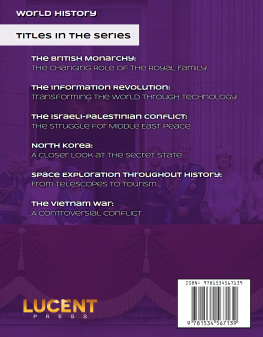

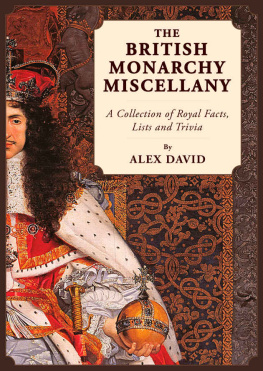
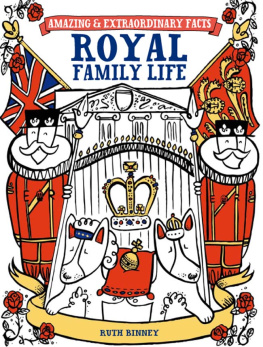

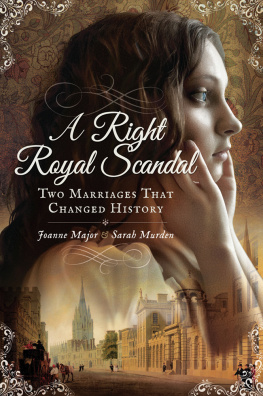
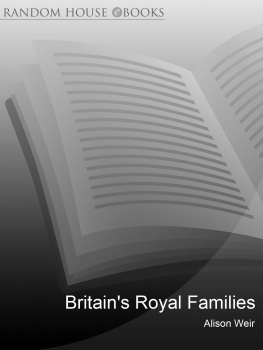
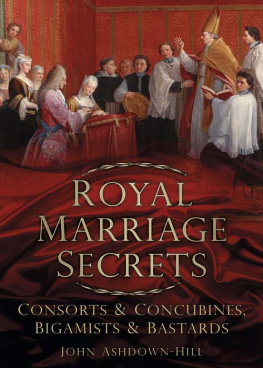

 P A P A C Y , M O N A R C H Y A N D M A R R I A G E , 8 6 0 1 6 0 0 Thisanalysisofroyalmarriagecasesacrosssevencenturiesexplainshowandhow farpopescontrolledroyalentryintoandexitsfromtheirmarriages.Intheperiod between c.860and1600,thepersonallivesofkingsbecamethebusinessofthe papacy.DAvrayexplorestherationaleforpapalinvolvementinroyalmarriagesand usesthemtoanalysethestructureofChurchStaterelations.Themaritalproblemsof theCaro-lingianLotharII,ofEnglishkingsJohn,HenryIIIandHenryVIIIand othermonarchs,especiallySpanishandFrench,uptoHenriIVofFranceandla reineMargot,havetheirplaceinthisexplorationofhowcanonlawcameto constrainpragmaticpoliticalmanoeuvringwithinasystemincreasinglyrationalised fromthemidthirteenthcenturyon.Usingdocumentspresentedintheauthors DissolvingRoyalMarriages,theargumentbringsouthiddenconnectionsbetween legalformality,annulmentsanddispensationsatthehighestsociallevel. D.L.dAvrayisProfessorofHistoryatUniversityCollegeLondon.AFellowofthe BritishAcademysince2005,hehaspublishedwidelyonreligiousandsocialhistory.
P A P A C Y , M O N A R C H Y A N D M A R R I A G E , 8 6 0 1 6 0 0 Thisanalysisofroyalmarriagecasesacrosssevencenturiesexplainshowandhow farpopescontrolledroyalentryintoandexitsfromtheirmarriages.Intheperiod between c.860and1600,thepersonallivesofkingsbecamethebusinessofthe papacy.DAvrayexplorestherationaleforpapalinvolvementinroyalmarriagesand usesthemtoanalysethestructureofChurchStaterelations.Themaritalproblemsof theCaro-lingianLotharII,ofEnglishkingsJohn,HenryIIIandHenryVIIIand othermonarchs,especiallySpanishandFrench,uptoHenriIVofFranceandla reineMargot,havetheirplaceinthisexplorationofhowcanonlawcameto constrainpragmaticpoliticalmanoeuvringwithinasystemincreasinglyrationalised fromthemidthirteenthcenturyon.Usingdocumentspresentedintheauthors DissolvingRoyalMarriages,theargumentbringsouthiddenconnectionsbetween legalformality,annulmentsanddispensationsatthehighestsociallevel. D.L.dAvrayisProfessorofHistoryatUniversityCollegeLondon.AFellowofthe BritishAcademysince2005,hehaspublishedwidelyonreligiousandsocialhistory.  PA PAC Y, M O N A R C H Y A N DM A R R I AG E ,8601600D.L.dAvrayUniversityCollegeLondon
PA PAC Y, M O N A R C H Y A N DM A R R I AG E ,8601600D.L.dAvrayUniversityCollegeLondon UniversityPrintingHouse,CambridgeCB28BS,UnitedKingdom CambridgeUniversityPressispartoftheUniversityofCambridge. ItfurtherstheUniversitysmissionbydisseminatingknowledgeinthepursuitofeducation,learningandresearchat thehighestinternationallevelsofexcellence. www.cambridge.org Informationonthistitle:www.cambridge.org/9781107062535 D.L.dAvray2015 Thispublicationisincopyright.Subjecttostatutoryexceptionandtotheprovisionsofrelevantcollectivelicensing agreements,noreproductionofanypartmaytakeplacewithoutthewrittenpermissionofCambridgeUniversity Press. ToJuliaWalworthContentsPrefacePapacy, Monarchy and Marriage, 8601600 is the analytical counterpart of its sister volume DissolvingRoyalMarriages,8601600.Thelatterwasorganisedchronologically andconsistedprimarilyofeditionsand/ortranslationsofthesources,thoughafairamount of fresh interpretation went into the introductions to the documents and the book as a whole. ToJuliaWalworthContentsPrefacePapacy, Monarchy and Marriage, 8601600 is the analytical counterpart of its sister volume DissolvingRoyalMarriages,8601600.Thelatterwasorganisedchronologically andconsistedprimarilyofeditionsand/ortranslationsofthesources,thoughafairamount of fresh interpretation went into the introductions to the documents and the book as a whole.
UniversityPrintingHouse,CambridgeCB28BS,UnitedKingdom CambridgeUniversityPressispartoftheUniversityofCambridge. ItfurtherstheUniversitysmissionbydisseminatingknowledgeinthepursuitofeducation,learningandresearchat thehighestinternationallevelsofexcellence. www.cambridge.org Informationonthistitle:www.cambridge.org/9781107062535 D.L.dAvray2015 Thispublicationisincopyright.Subjecttostatutoryexceptionandtotheprovisionsofrelevantcollectivelicensing agreements,noreproductionofanypartmaytakeplacewithoutthewrittenpermissionofCambridgeUniversity Press. ToJuliaWalworthContentsPrefacePapacy, Monarchy and Marriage, 8601600 is the analytical counterpart of its sister volume DissolvingRoyalMarriages,8601600.Thelatterwasorganisedchronologically andconsistedprimarilyofeditionsand/ortranslationsofthesources,thoughafairamount of fresh interpretation went into the introductions to the documents and the book as a whole. ToJuliaWalworthContentsPrefacePapacy, Monarchy and Marriage, 8601600 is the analytical counterpart of its sister volume DissolvingRoyalMarriages,8601600.Thelatterwasorganisedchronologically andconsistedprimarilyofeditionsand/ortranslationsofthesources,thoughafairamount of fresh interpretation went into the introductions to the documents and the book as a whole.